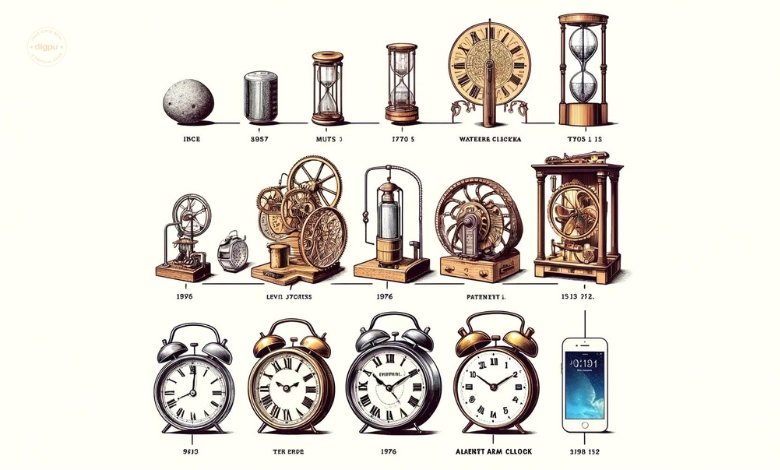Materials and Craftsmanship of Contemporary Clocks
Oct 30, 2025
In today’s design world, a clock is no longer just a tool for measuring time — it is an object of style, innovation, and artistry. The materials and craftsmanship behind contemporary clocks have evolved dramatically, combining technology with design to create pieces that are both functional and visually striking.
At Tongyuan Clocks, we take pride in blending traditional precision with modern aesthetics. Understanding how materials influence quality, durability, and design can help you choose the perfect clock for your home or office.
The Evolution of Clock Materials
For centuries, clockmakers have experimented with materials that reflect the craftsmanship and character of their time. Early clocks were made from wood, brass, and glass — materials that expressed warmth, solidity, and elegance.
As design trends shifted and technology advanced, modern clockmakers began exploring lighter and more versatile materials such as aluminum, acrylic, resin, and engineered composites. Each material brings its own aesthetic language and functional advantages, enabling designers to create clocks that match diverse interior styles — from rustic and vintage to ultra-modern minimalism.
Wood: Natural Warmth and Timeless Appeal
Wood remains one of the most beloved materials in clockmaking. Its organic texture and natural grain create a sense of warmth and connection to nature. Depending on the finish — oak, walnut, beech, or bamboo — wooden clocks can evoke anything from traditional comfort to modern simplicity.
In contemporary design, wood-finished plastic has also gained popularity for offering the same natural look with lighter weight and greater durability. These models combine the visual charm of wood with the practicality of modern engineering.
Metal: Precision and Modern Elegance
Metal clocks symbolize strength, clarity, and modern sophistication. Materials such as stainless steel, aluminum, and iron are prized for their clean lines, durability, and reflective beauty.
A brushed or polished metal frame adds a touch of luxury to living rooms, offices, or commercial spaces. Metallic finishes also pair beautifully with minimalist décor, giving spaces a sleek and professional appearance. At VirtueTime, we use advanced metalworking techniques to ensure every edge, curve, and hand movement reflects refined precision.
Acrylic and Glass: Lightness and Transparency
Acrylic and glass have redefined the aesthetics of modern wall clocks. Their transparency and smooth finishes allow for elegant, airy designs that enhance the perception of space. Acrylic is particularly valued for being lightweight, shatter-resistant, and ideal for creative shapes or 3D effects.
Glass-faced clocks, on the other hand, bring a touch of timeless elegance. Whether paired with wood, marble patterns, or metal accents, they create a sense of refinement that suits both modern and classic interiors.
Resin and Composites: Creativity and Customization
Resin and composite materials open the door to artistic experimentation. These materials can mimic marble, stone, or ceramic finishes while remaining lightweight and affordable. They are often used in designer clocks with unique textures, patterns, or color gradients, offering endless possibilities for personalization and branding.
For OEM and ODM partners, these materials allow for flexibility in production and creative freedom in clock face design — from embossed numerals to corporate logos and themed artwork.
The Art of Craftsmanship
Behind every contemporary clock is a blend of engineering precision and artisanal attention to detail. At VirtueTime, our process combines CNC precision cutting, hand assembly, and quality control to ensure every piece meets global standards for accuracy and durability.
The craftsmanship extends beyond materials — it includes the movement technology. Our clocks use high-quality quartz movements to ensure silent, smooth operation and long-term reliability. Every hand alignment, surface polish, and balance adjustment reflects decades of expertise.
Design Meets Function
The true beauty of contemporary clocks lies in how materials and craftsmanship serve both aesthetics and purpose. A matte metal frame emphasizes simplicity; a wooden surface adds warmth; a glossy acrylic finish reflects light and energy. Each material choice is intentional — designed to enhance not only the space but also the experience of time itself.
At Tongyuan Clocks, we believe that great design should endure. That’s why our clocks are built to combine modern materials, timeless style, and quiet precision. From elegant living rooms to corporate interiors, every model reflects a balance of art, technology, and craftsmanship.
Explore our full range of designs at www.tongyuanclock.com and discover how contemporary materials and fine workmanship bring timeless elegance to your space.
Read More





